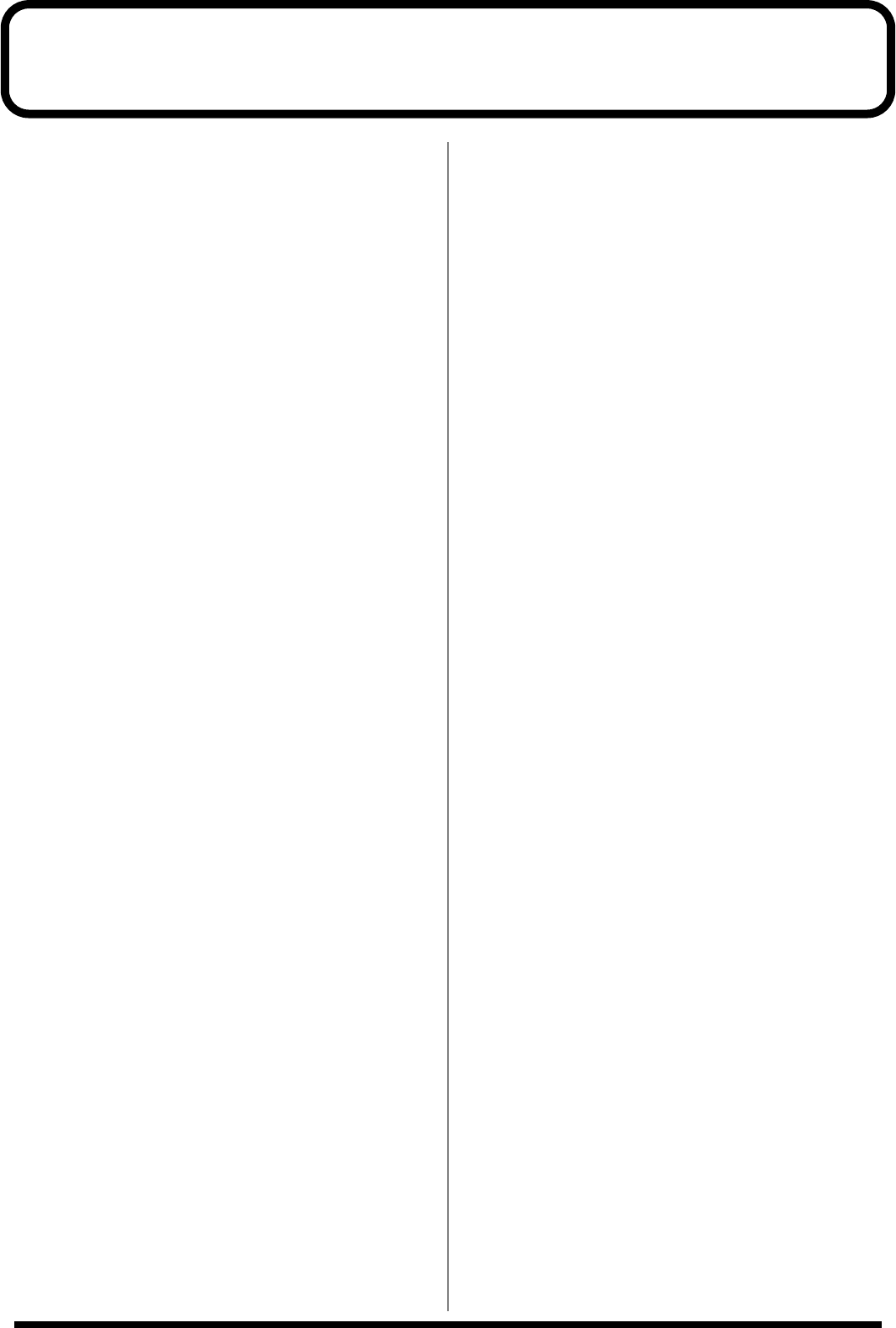
384
About MIDI
This section explains the basic concepts of MIDI,
and how the MV-8000 handles MIDI messages.
What is MIDI
MIDI stands for
Musical Instrument Digital
Interface
. It is a worldwide standard that allows
electronic musical instruments and personal
computer to exchange musical performance data
and messages such as sound selections. Any
MIDI-compatible device can transmit musical data
(as appropriate for the type of device) to any other
MIDI-compatible device, regardless of its
manufacturer or model type.
MIDI connectors
MIDI messages (the data handled by MIDI) are
transmitted and received using the following two
types of connectors. The MV-8000 has two MIDI
OUT connectors; A and B.
MIDI IN:
This receives MIDI messages from external
MIDI devices.
MIDI OUT A/B:
This transmits MIDI messages from
the MV-8000.
MIDI channels
MIDI is able to send information over a single MIDI
cable independently to two or more MIDI devices.
This is made possible by the concept of MIDI
channels. You can think of MIDI channels as being
somewhat similar in function to the channels on a
television. By changing the channel of a TV set, you
can view a variety of programs being transmitted
by different broadcast stations. This is because data
is received only from the transmitter whose channel
is selected on the receiver.
In the same way, a MIDI device whose receive
channel is set to “1” will receive only the data being
transmitted by another MIDI device whose transmit
channel is also set to “1.”
MIDI messages
The MV-8000 uses the following types of MIDI
message.
Note messages:
These messages are used to play notes. On a
keyboard, these messages transmit the key (note
number) that was pressed, and how strongly it was
pressed (velocity). On the MV-8000, these messages
are used when you use a MIDI sound source to play
the metronome sound.
Control Change messages:
In general, these messages are used to transmit
information such as vibrato, hold, and volume etc.,
that makes a performance more expressive. The
various functions are differentiated by a controller
number from 0–127, and the controller number is
defined for each function. The functions that can be
controlled on any given device will depend on that
device.
On the MV-8000, these messages can be transmitted
to external MIDI devices by V.Fader function.
Exclusive messages:
Unlike note messages and control change messages,
exclusive messages are used to transmit settings
that are unique to a particular device. On the
MV-8000, they can be used to control MV-8000
mixer parameters, when it receives exclusive
messages.
Exclusive messages intended for different units are
distinguished by their Device ID, rather than by
MIDI channel. When exclusive messages are to be
transmitted or received, you must set the Device ID
of both units to a matching setting.
MIDI Implementation Chart
MIDI allows a variety of electronic musical
instruments to communicate with each other.
However it is not necessarily the case that all
devices will be able to communicate using all types
of MIDI message. They can only communicate
using those types of MIDI message that they have
in common.
Each owner’s manual for a MIDI device includes a
MIDI Implementation Chart. This chart shows you
at a glance the types of MIDI message that can be
transmitted and received. By comparing the
implementation charts of two devices, you will be
able to see the types of message with which they
will be able to communicate.
ECS05_manual_e.book 384 ページ 2005年11月30日 水曜日 午前11時14分


















